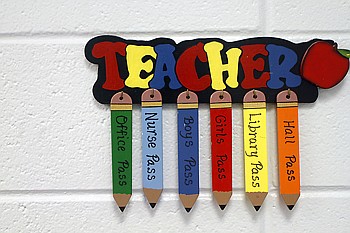Over the next 10 days or so, more than 42,000 North Georgia students will return to classes with the state's education system facing unprecedented financial straits, more children and an uncertain future.
The first school bell in the region rings this morning at Chickamauga City Schools, followed Thursday by Catoosa County Public Schools.
As they start the school year, and before the first student hits the door, Chickamauga teachers already know they're going to have six furlough days, while Catoosa's teachers face five.
In Chickamauga, where about 1,350 students will be at their desks, Superintendent Melody Day said officials are entering the year with the understanding that every penny counts - literally.
"It's that tight," Day said.
The three-school system last year slipped to 168th out of 180 systems statewide in terms of system wealth because of the floundering economy, she said.
"We are trying to look at every aspect of our operation being as efficient as possible, because I'm very concerned about the mid-term adjustment," Day said.
Georgia legislators can make more budget cuts at the mid-term of the school year, something they did in the 2009-2010 school year.
In Catoosa County, where 10,400 students in 16 schools head back to class Thursday, Superintendent Denia Reese has the same fears with a budget that is $3 million shorter than last year.
"The potential for a mid-year budget cut is our biggest challenge," Reese said in an e-mail response. "We have to be realistic and plan for a mid-year adjustment."
Catoosa's employees took a five-day pay cut for this year to help keep student programs and teaching jobs in place while continuing to improve graduation rates, she said.
Both superintendents said the schools' primary focus remains on academics.
But teachers say they will plow ahead whatever the circumstances.
Shelley Johnson, a fifth-grade teacher at Catoosa's Graysville Elementary, said the school's fifth graders are spared the larger classes because of shifting student populations.
"Last year, we were at about 28, almost 30 students in fifth grade, and this year we're right at 22," Johnson said. "We are breathing a sigh of relief."
Larger classes forced students to share textbooks at times last year, and that might happen occasionally this year, she said.
Gordon Lee High School English teacher Mandy Sturdivant said larger class sizes create a mismatch of equipment and students for some classrooms.
Classroom equipment, such as computers, was purchased when Georgia's maximum class size was 28, Sturdivant said.
"Last year, my average class size was between 23 and 25, and this year I'm looking at 30 to 32," she said.
Bigger classes mean more group assignments and rotation arrangements to make sure all students can use the equipment, she said.
Chickamauga graduation coach Jeff Guffey said the bad economy has the same impact on student families as schools.
"A lot of the families are in dire need right now," he said.
Even with up to six furlough days, teachers will try to buy school supplies for families that can't afford it, he predicted. Teachers ultimately want their students to do well, whatever the cost, he said.
